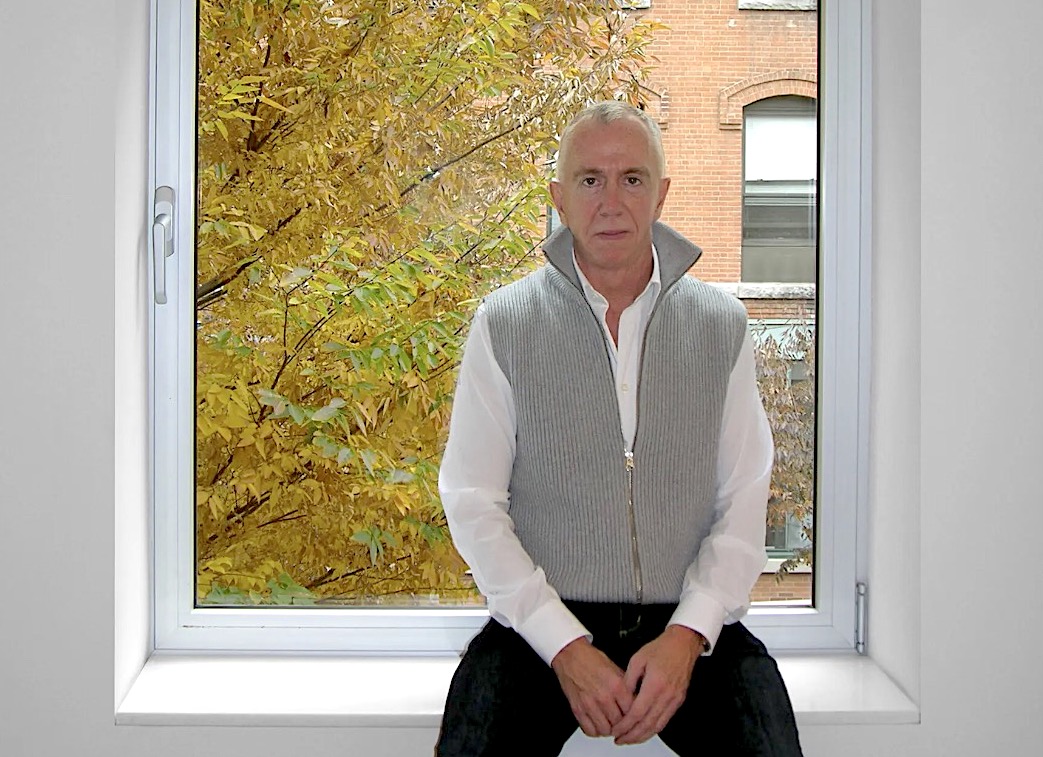Raven (gun)
1987 - Photography (Photography)
Catherine Opie
In this work, a woman sits on a couch with her shirt pulled up to expose her pierced nipples, which are connected by a chain. She wears an expression of both pleasure and intensity as she points a gun at someone or something outside of the frame. Raven (gun) (1994) is not so much threatening as full of sexuality and potential energy. Opie often photographs her friends, of whom Raven is one, and here she captures Raven in the intimate act of role playing. Instead of keeping such activities behind closed doors, Opie brings sexuality fully into view in an effort to question and widen our definition of normalcy.
Since the 1990s, Catherine Opie has been recognized for her use of documentary photography to address issues of community and queerness, and the ways in which identity is shaped by architecture. Particularly resonant during the Culture Wars of the 1980s and early 1990s—a time in which the religious right tried to impose itself as a political force and cultural censor—Opie’s photographs privilege the representation of specific communities, whether the LGBT, teenagers, surfers, football players, or her group of friends who engage in sexual role playing, tattooing, and piercing.
Colors:
Related works of genres: » lesbian artists, » contemporary artist, » photographer, » 21st-century american photographers, » born1961, » photographers from california

© » KADIST
LaToya Ruby Frazier
2011LaToya Ruby Frazier is an artist and a militant; her photos combine intimate views of her relation with her parents and grandparents with the history of the Afro-American community of Braddock, Pennsylvania, where she grew up and where her family still live...

© » KADIST
Jonathan Monk
2003Untitled (rolled up) , is an abstract portrait of Owen Monk, the artist’s father and features an aluminum ring of 56.6 cm in diameter measuring 1.77 cm in circumference, the size of his father...

© » KADIST
Raymond Pettibon
2000Untitled (Wall Street’s Chosen Few…) is typical of Pettibon’s drawings in which fragments of text and image are united, but yet gaps remain in their signification...

© » KADIST
Hans-Peter Feldmann
The types of objects Feldmann is interested in collecting into serial photographic grids or artist’s books are often also found in three dimensional installations...

© » ARTLYST
Kara Walker
Brent Sikkema, the Manhattan art dealer renowned for representing artists such as Jeffrey Gibson and Kara Walker found dead The post Brent Sikkema – Visionary Art Dealer Of Jeffrey Gibson And Kara Walker Murdered appeared first on Artlyst ....

© » KADIST
Zanele Muholi
2014As a visual activist for the rights of Lesbian, gay, bisexual, transgender, queer and intersex (LBGTQI), Muholi’s photographs radically transgress the conventional perception of lesbian and transgender communities in South Africa...

© » KADIST
Rodney Graham
1991Ponderosa Pine IV belongs to a series of large-scale photographs of trees taken by Graham and depicts a particular species that live in Northern California...

© » KADIST
Hans-Peter Feldmann
The types of objects Feldmann is interested in collecting into serial photographic grids or artist’s books are often also found in three dimensional installations...

© » KADIST
Gregory Crewdson
2005Forest Gathering N.2 is part of the series of photographs Beneath the Roses (2003-2005) where anonymous townscapes, forest clearings and broad, desolate streets are revealed as sites of mystery and wonder; similarly, ostensibly banal interiors become the staging grounds for strange human scenarios...

© » KADIST
Hank Willis Thomas
2014South Africa Righteous Space by Hank Willis Thomas is concerned with history and identity, with the way race and ‘blackness’ has not only been informed but deliberately shaped and constructed by various forces – first through colonialism and slavery, and more recently through mass media and advertising – and reminds us of the financial and economic stakes that have always been involved in representations of race....

© » KADIST
Allen Ruppersberg
1970Untitled (City Limits) is a series of five black-and-white photographs of road signs, specifically the signs demarcating city limits of several small towns in California...

© » KADIST
Harun Farocki
2009For Immersion , Harun Farocki went to visit a research centre near Seattle specialized in the development of virtual realities and computer simulations...

© » KADIST
Zanele Muholi
2014As a visual activist for the rights of Lesbian, gay, bisexual, transgender, queer and intersex (LBGTQI), Muholi’s photographs radically transgress the conventional perception of lesbian and transgender communities in South Africa...







